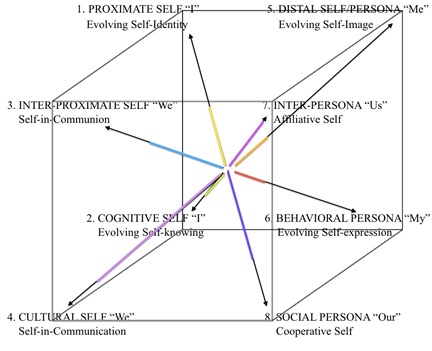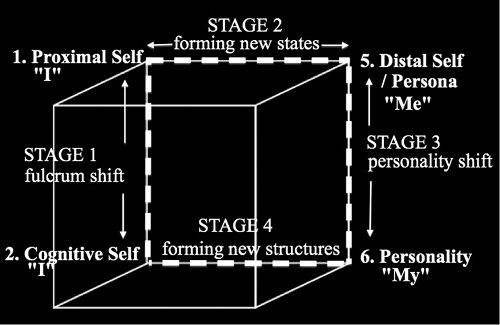|
TRANSLATE THIS ARTICLE
Integral World: Exploring Theories of Everything
An independent forum for a critical discussion of the integral philosophy of Ken Wilber
 Author Lex Neale is an independent Integral Theorist and member of the Integral Research Center. After taking a B.Sc in Zoology at London University he became involved in consciousness studies, and developing his thesis that the origin of life is consciousness. In India he became a practitioner of Prem Rawat's "Knowledge of the Self", and has an ongoing affiliation with the Prem Rawat Foundation, www.tprf.org He lives in the redwoods of northern California. Author Lex Neale is an independent Integral Theorist and member of the Integral Research Center. After taking a B.Sc in Zoology at London University he became involved in consciousness studies, and developing his thesis that the origin of life is consciousness. In India he became a practitioner of Prem Rawat's "Knowledge of the Self", and has an ongoing affiliation with the Prem Rawat Foundation, www.tprf.org He lives in the redwoods of northern California.THE AQAL CUBE INTEGRAL PSYCHOGRAPHLex Neale
I suggest that an Integral psychotherapist tries evaluating clients through a Self-system psychograph of Eight First Person Perspectives.
Recently in a personal communication with a notable Integral psychotherapist I proposed the First Person AQAL cube as an advancement on the standard Integral psychograph used to assess a client's configuration of altitudes through the First Person Lines. His response was: “From my perspective, your theory seems wildly hyper-differentiated - to the point of essentially being unusable as a practitioner. How would I possibly make sense of an “eight selves” model in real time with a person or client? How would you study or track that? I would call it impossible.” Naturally, I had to address that, realizing that an incredible blind spot exists in Integral Theory, and consequently Integral psychotherapy, even though Wilber's own differentiation of eight First Person “Selves” is quite explicit in attributing each of them their own First Person pronoun. The AQAL Cube, as an expansion of Wilber's AQAL Square, integrates all these additional perspectives. For a primer on this model go to "The AQAL Cube for Dummies" (Integral Leadership Review, June 2013). First Person OctodynamicsIn “The AQAL Cube for Dummies” I differentiated AQAL Consciousness as the Climber from AQAL Mind as the Ladder. These are synonymous with the “Inside” Proximate Self and “Outside” Cognitive Self respectively. The various Lines of the Self System in the AQAL Square Upper Left have an eerie correspondence with the Eight First Person Perspectives. Naturally, this needs to be played out in Integral Research, but I propose that the correspondence self-evidently corroborates the First Person AQAL Cube. In the following analysis, Levels are designated as colors of the Wilber- Newtonian spectrum:
I suggest that Integral psychotherapists try evaluating their clients through their Octo-Dynamic Self system of First Person Perspectives, which also categorize the various Self Lines. Evaluating a Client “Bob” Through Eight First Person Perspectives?The following is a simple demonstration of the First Person AQAL Cube as an Integral Psychograph, to evaluate our client “Bob” with a questionnaire and find his altitude in each of his Eight First Person Perspectives. The AQAL Cube Psychograph, Figure 1, shows how the altitude of each Perspective can be represented as a color on the Wilber-Newtonian Spectrum.
Figure 1. The AQAL Cube Psychograph

Navigating Fulcrum ShiftsI suggest that an Integral psychotherapist tries evaluating clients through a Self-system psychograph of Eight First Person Perspectives, and differentiates them as a Consciousness-Mind dynamic by which their clients can be navigated through the Levels of each Octant. Transitioning from one Cognitive Level to the next on Octant 2 is called a Fulcrum Shift, where a fulcrum is like a rung on the Cognitive Ladder. So when we talk about the Self-system as navigating through developmental fulcrum Levels, we are dealing on the one hand with identity shifts in Consciousness (Climber) and on the other hand with correlated cognitive fulcrum shifts of Mind (Ladder). Because of this, to integrate eight Self-Octants is a far more complex process than Integral Theory describes. On the First Person AQAL Cube a fulcrum shift is primarily an “Individual Quadrants” Tetra-Dynamic, a complex integration between all four “Individuals” Octants 1, 2, 5 and 6; where stable Subjective identity shifts (Octants 1 and 2) also need to be accompanied by stable Objective identity shifts (Persona, and Behavioral Personality, Octants 5 and 6), shown in Figure 2.
Figure 2. The Tetradynamics of a Fulcrum Shift
 I propose that there are four stages to completing a fulcrum shift.
This is a very complex process where there is many a slip twixt cup and lip. This entire process needs to be re-evaluated using the First Person AQAL Cube Octo-Dynamics, because Integral Theory lacks a First Person AQAL Cube model to map the octodynamics of psychopathology associated with Fulcrum failures, or to map appropriate psychotherapies. A very simple example of a psychotherapeutic, First Person “Individuals” Tetra-Dynamic is the breath cycle. In consciously taking and experiencing “My” breath (Octant 6), “I” experience a calming of thoughts (Octant 2), which “I” Witness (Octant 1), as transforming “Me” (Octant 5). This is how the breath cycle can be analyzed as a transformative meditative First Person AQAL Cube practice towards greater self-awareness. In other words, every self-aware act we undertake becomes potentially transformative through the above First Person “Individuals” Tetra-Dynamic. Certain of our Eight Fundamental Perspectives evolve faster than others, partly because of the fixed developmental sequence of unfolding psychological stages; partly because some people are more introverted and others more extroverted; partly because some are more introspective and others more objective; partly because our individual lines of intelligence (instinctual, emotional, rational, moral, spiritual) vary in their levels of development and so on. These are issues we each have to deal with in our own way. We can process these issues in the same way we just processed our breath cycle. For example, my non-material Self (“I”, Octant 1) identifies an innate need or an evolutionary imperative. My material Self (“I”, Octant 2) experientially interprets this need as various experiential hungers and psychological urges via its appropriate intelligence structures. And to meet those needs my material organism has to perform some appropriate objective behavior (“My”, Octant 6). Depending on whether those needs are correctly identified, interpreted and objectively met, then my objective Persona (“Me”, Octant 5) is either satisfied, or it will prompt me to identify a more appropriate intention (“I”, Octant 1). It is clear that there is a great potential for dysfunction and lack of integration of the participating Octants—such as a poor identification of the need (Octant 1), a lack of information and intelligence to correctly interpret the need (Octant 2), poor skills or appropriate behavior to meet the need (Octant 6), or poor objective judgment in satisfying the need (Octant 5). A simple form of fulcrum dysfunction is when we tend to identify more with one of the Eight First Person Perspectives as our modus operandum, which manifests as a behavioral bias or imbalanced character trait. For example, we can be predominantly an Introspective (Octant 2), a Personality (Octant 6), a Socialite (Octant 8) or Community Spirit (Octant 4). But we can balance our lopsidedness by integrating the diametrically opposite perspective: the Introspective (Octant 2) finds release in its Social Persona (Octant 7), the superficial personality (Octant 6) finds depth in its Cultural Self (Octant 3), the outgoing Socialite (Octant 8) finds inner peace in its Proximate Self (Octant 1), and the selfless Community Spirit (Octant 4) attends to personal needs in its Persona (Octant 5). Please contact me at [email protected] if you would like to discuss the AQAL Cube Psychograph further. BibliographyNeale, L. The AQAL Cube for Dummies. Integral Leadership Review, June 2011 Riso, D. & Hudson, R. 1996. Personality Types. Wilber, K. 2000. Integral Psychology. Shambhala, Boston. Wilber, K. 2006. Integral Spirituality. Integral Books, Boston.
|